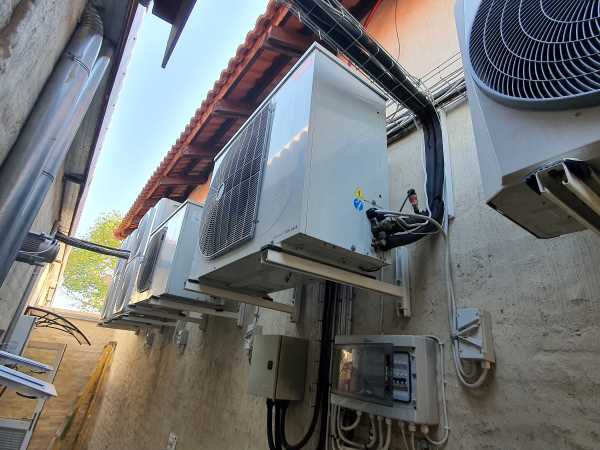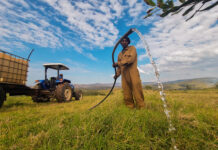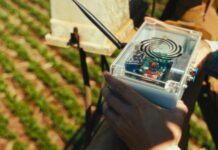Alistair Bell, Technical Support Engineer at Danfoss South Africa
There is no question that energy efficiency is swiftly becoming a key concern within the refrigeration and air-conditioning sector at a global level.
In addition, power supply constraints in some parts of the world, such as South Africa, are putting an added emphasis on expanding HVAC-R (heating, ventilation, air-conditioning and refrigeration) infrastructure using the same power supply.
Recent European studies by Danfoss estimated that the use of inverter technology could potentially lead to an energy saving of approximately 30 percent when compared to fixed speed technology. This, however, is averaged out taking factors into account such as:
- Design criteria;
- Ambient temperatures;
- Varying load conditions;
- Door openings;
- Products being stored;
- and more.
When looking at this, it was clear that claiming a blanket 30 percent saving was vague and therefore needed further investigation.
Danfoss South Africa undertook to set up a local study to measure the potential energy saving that could be expected from using inverter technology. This was done both theoretically and physically, by setting up a practical experimental site in South Africa.
Theoretical data
Based on the eventual design criteria, the following was considered:
| Optyma Model | OP-MPVE068 | OP-MPPM044 | |
| Code | 114X7043 | 114X4334 | |
| Technology | Fixed speed scroll | Permanent magnet motor Inverter scroll | |
| Refrigerant | R507 | R507 | |
| Number of rooms | 1 | 2 | |
| Door opening frequency | Low | Medium | High |
| Products stored | Beverages | Bakery products | Mixed products |
| Expansion technology | Thermostatic | Thermostatic | Thermostatic |
| Evaporating temperature | +3 0C | -2 0C | -2 0C |
| Ambient temperature[1] | 26 0C 1 | 26 0C 1 | 26 0C 1 |
| Eventual design capacity [2] | 4.2 kW | 1.8 kW | 2.7 kW |
Table 1 – Conditions of selection
Practical test
The initial design specification called for 100 percent capacity on both units, with the inverter unit being slightly undersized (10kW of cooling capacity, with 9kW capacity being delivered under a worst case scenario of -5°C evaporating temperature with 43°C ambient temperature).
Further to this, selections were made taking worst case scenarios into account which, according to a rule of thumb, only occurs two percent of the time throughout the year.
This calculation was derived as follows:
- South Africa typically experiences three warm months during the year (December, January and February).
- During these days, the highest temperatures were experienced for approximately two hours, depending on the specific day’s weather.
- Taking both of these factors into account, an accurate assumption could be made that maximum temperatures would be experienced for 178 hours over a full year.
- This equates to two percent of a full year (Weather, 2021), meaning that Danfoss chose units to run at the design specification for this time only. For the remaining 98 percent of the time, there would be excess capacity due to an oversized design.
Results
Sizing: Condensing units are selected, taking a worst case scenario into account as already mentioned, and are therefore running at full capacity for two percent of the year. To calculate energy consumption over a period of time, this must be compensated for this by calculating a Worst-Case Scenario Factor (WCSF).
| Optyma model | OP-MPVE068 | OP-MPPM044 |
| Code | 114X7043 | 114X4334 |
| Technology | Fixed speed | Variable speed |
| WCSF | 3.05 | 2.83 |
Table 2 – Worst-Case Scenario Factor (WCSF)
Electricity consumption: After logging the accumulative kWh consumption of both units over a three-month period, the following results could be reported:
| Optyma model | OP-MPVE068 | OP-MPPM044 |
| Code | 114X7043 | 114X4334 |
| Technology | Fixed speed | Variable speed |
| Acc kWh (5 Feb 2021 – 4 Apr 2021) | 1 703.3 kWh | 1 193.4 kWh |
| Daily average kWh | 19.35 kWh | 13.56 kWh |
| Actual annual extrapolated kWh | 6 813.2 kWh | 4 773.6 kWh |
| WCSF | 3.05 | 2.83 |
| Full size consumption | 20 780.3 kWh | 13 509.3 kWh |
| Capital cost factor 3 | 1 | 2 |
Table 3 – Results of electricity consumption
Analysis of results
Electricity savings were calculated as follows:
However, once the adjusted size factor had been taken into account, annual saving were adjusted as below:
Monetising
Looking at the results, it can be said with confidence that inverter scroll compressor technology would offer a significant saving as compared to fixed speed scroll technology or similar. It is therefore possible to calculate a monetising factor by converting it to a non-dimensional value:
The equation can then be revised as follows:
For every one unit (electricity consumption/cost) consumed or spent on the fixed speed unit, an equivalent 0.7 units are consumed or spent on the inverter unit.
Factors that were not incorporated, but would significantly contribute to a further saving, include peak load demand during peak electricity periods, where one would pay for the highest peak load demand. Typically, this happens when fixed speed compressors start up and the amperage spikes for split seconds. This influence is neutralised using inverter technology, further reducing consumption due to actively adapting to cooling demand by speeding the compressor up and down, thereby varying the demand load. This is but one factor that could further increase direct electricity savings.
Further actions
Direct impact: Based on the results of this study, it is clear that when using basic technology, a saving could be realised by merely changing one element of the cycle. Further savings could hence be reached by potentially changing the following:
- Thermostatic expansion to electronically controlled expansion (Danfoss MSS* technology specifically).
- Implementing smart defrost cycles, including defrost on demand.
- Pulsing of fans during the off cycle, and more.
With the inclusion of these additional features (normally already incorporated in the evaporator controller), a saving of approximately 40 percent can easily be realised, when comparing traditional technologies.*
Indirect impacts: Putting the electricity saving aside, further savings and optimisation features to be gained by using this technology include:
- Increased food safety due to accurate suction control, which directly leads to an upsurge in food shelf life.
- Reduced sound levels (dB) due to compressor technology and EC fans.
- A smaller footprint – one unit to run several cold rooms, as it can adjust to load.
- Lower maintenance cost due to fewer components.
- Reduced complexity and capital cost on installation:
- One condensing unit with two rooms, which leads to shorter pipe runs and less gas.
- Less chance of leaks.
Conclusion
It can safely be said that a minimum of 30 percent in electricity savings could be realised in equally sized condensing units, when changing over from fixed speed scroll technology to inverter scroll technology. And this saving only increases as cooling circuits are added to the inverter condensing unit.
When looking at the expanded criteria, it is completely plausible to assume that the saving will most likely lead to a 40 percent saving in electricity when sizing the units correctly, and combining the inverter scroll technology with the appropriate energy-saving evaporator (MSS) controls.
Return on investment (ROI)/ total cost of ownership (TCO) will depend on the type of installation but can be easily calculated using the information outlined above and an escalation in electricity cost on an annual basis.
[1] An ambient temperature was obtained by taking the average ambient temperature over the three-month span.
[2] Data extracted from Danfoss Coolselector2 using the abovementioned data
* Minimum stable signal, offering a further six to eight percent in electricity savings, depending on application.








